The Politics of Preservation in Nagorno-Karabakh
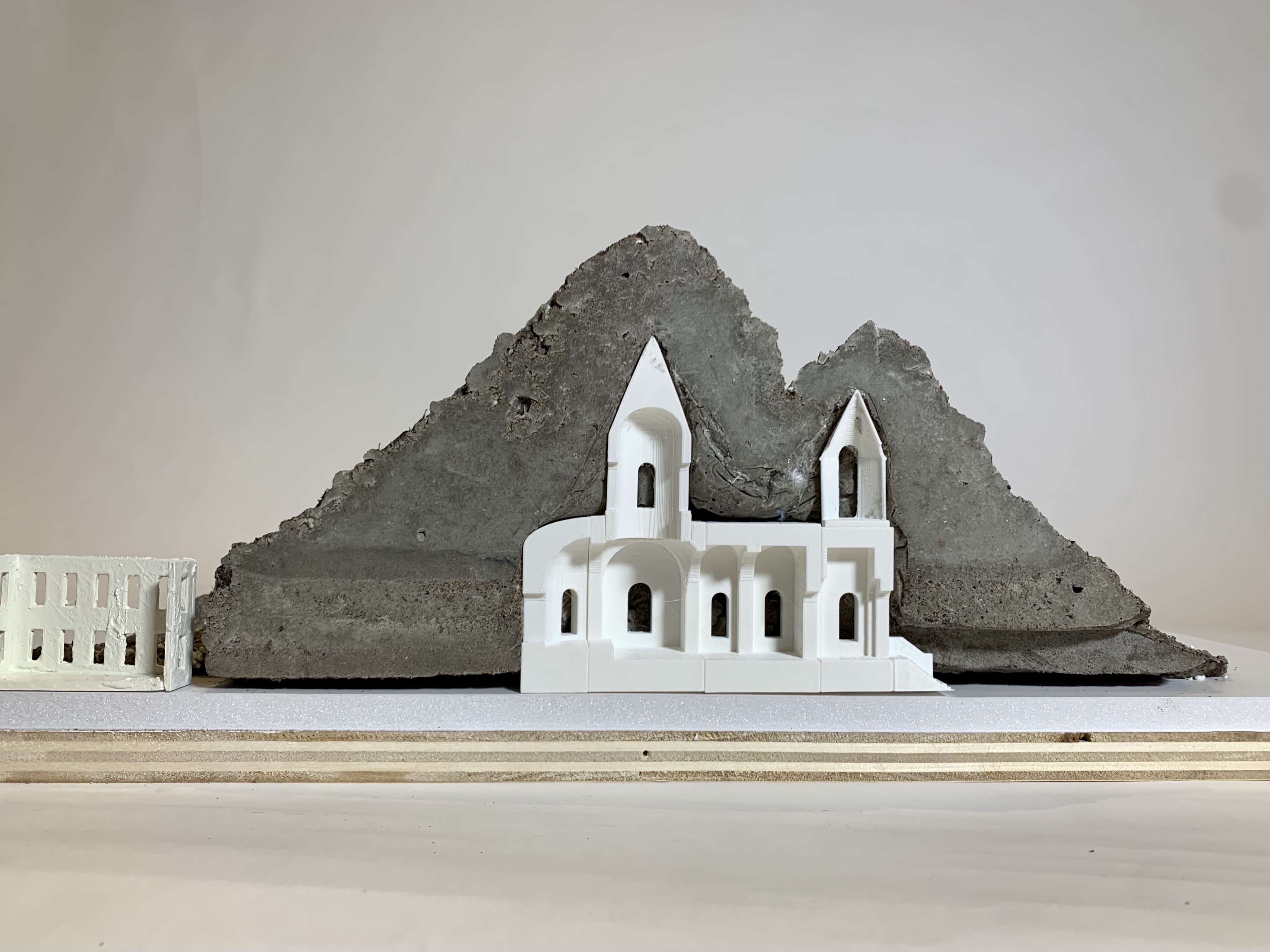
What happens to heritage in conflict zones?
Zham in Shushi. The research responds to the destruction of Armenian heritage by reimagining a "victory park" that paradoxically resists cultural erasure.
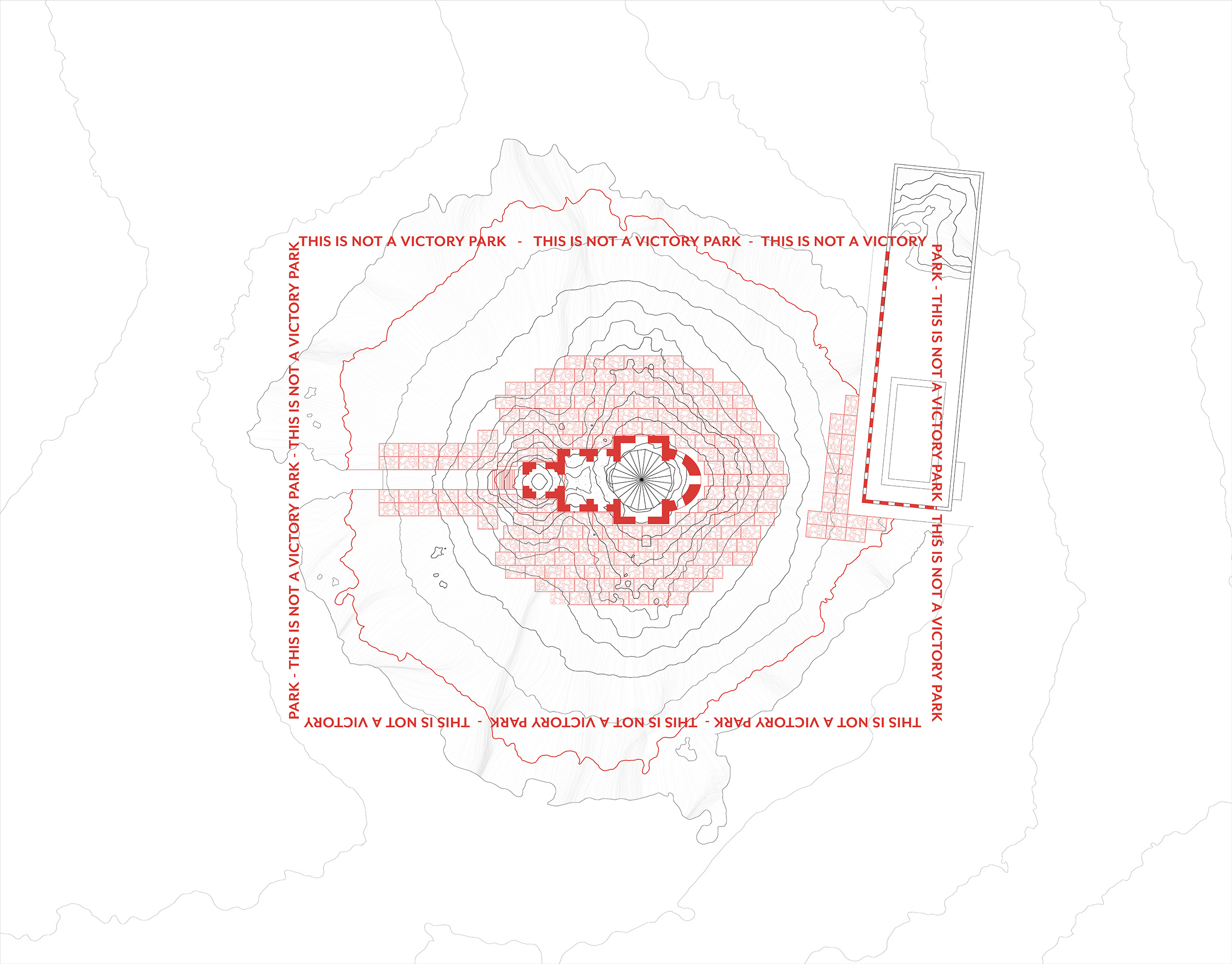
The Politics of Erasure
Armenia’s cultural sites, especially churches, have been targets of destruction or revisionist repurposing. The 2020 war saw widespread vandalism of Armenian heritage, with sites like Ghazanchetsots Cathedral modified under the guise of "restoration."
Russian peacekeepers now oversee some of these sites, but their future remains uncertain.
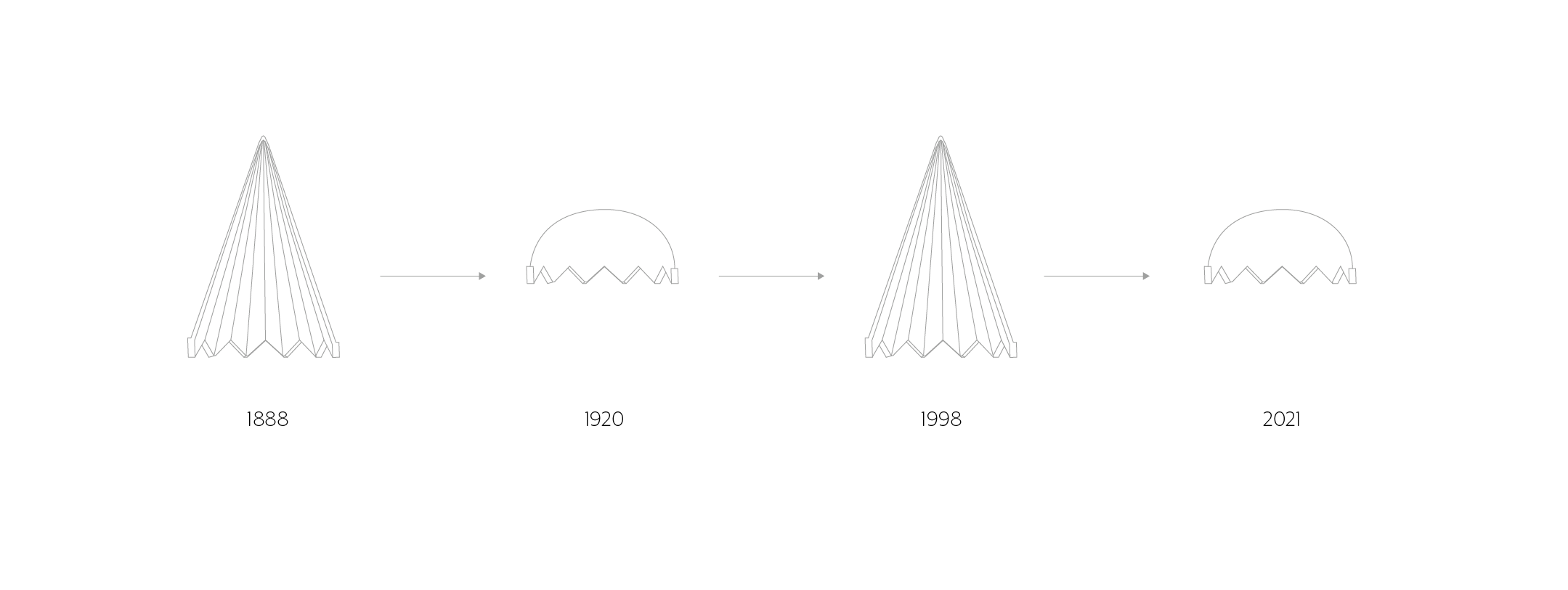
Shushi: A Contested Topography
Shushi’s strategic elevation made it a key battleground and now a focal point for cultural rewriting. Kanach Zham, a lesser-known church, was particularly at risk. Inspired by an Azerbaijani writer’s claim that "each Armenian church was the same color as the mountain next to it," this project proposes an artificial mountain that buries and protects the church.

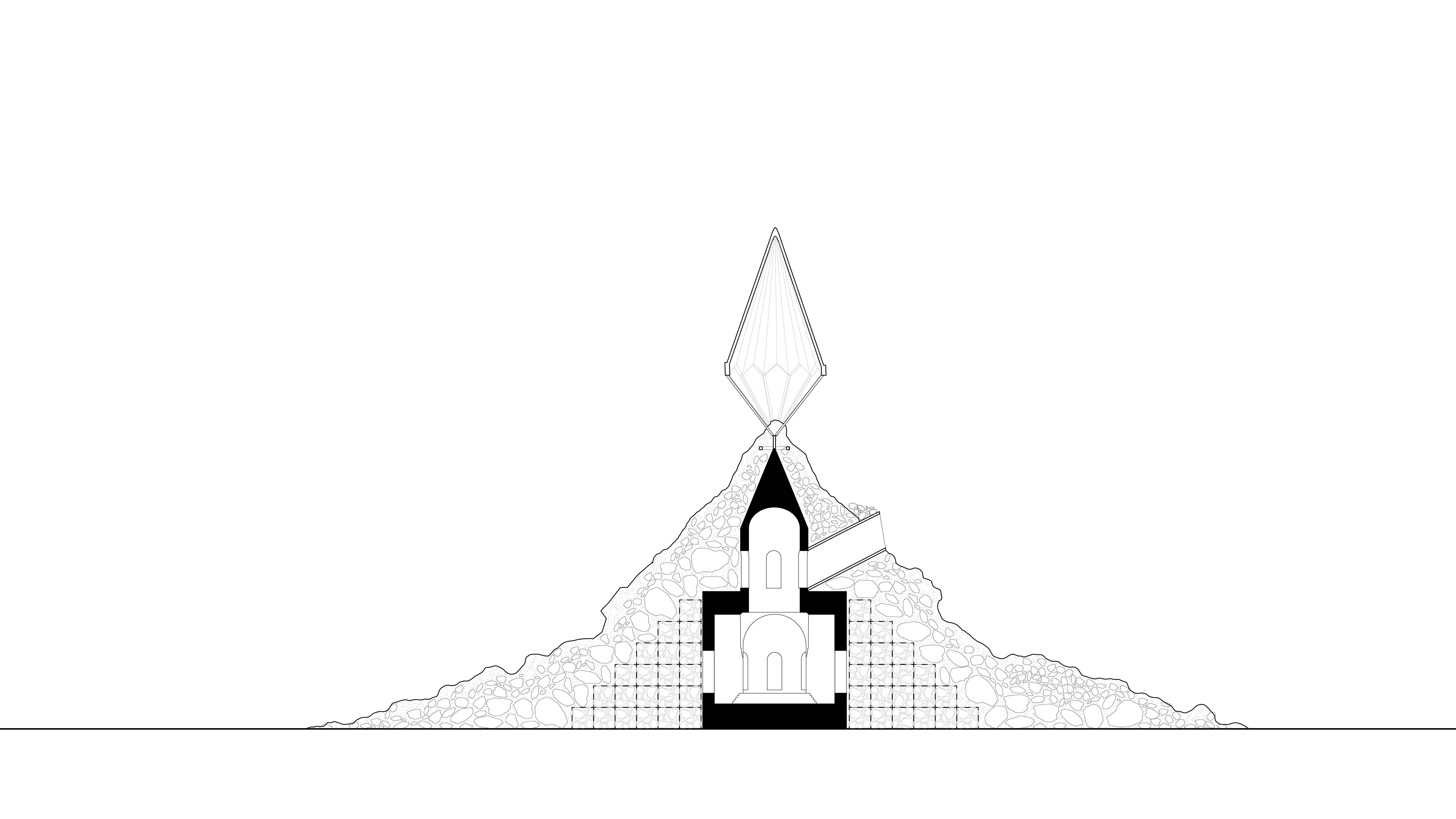
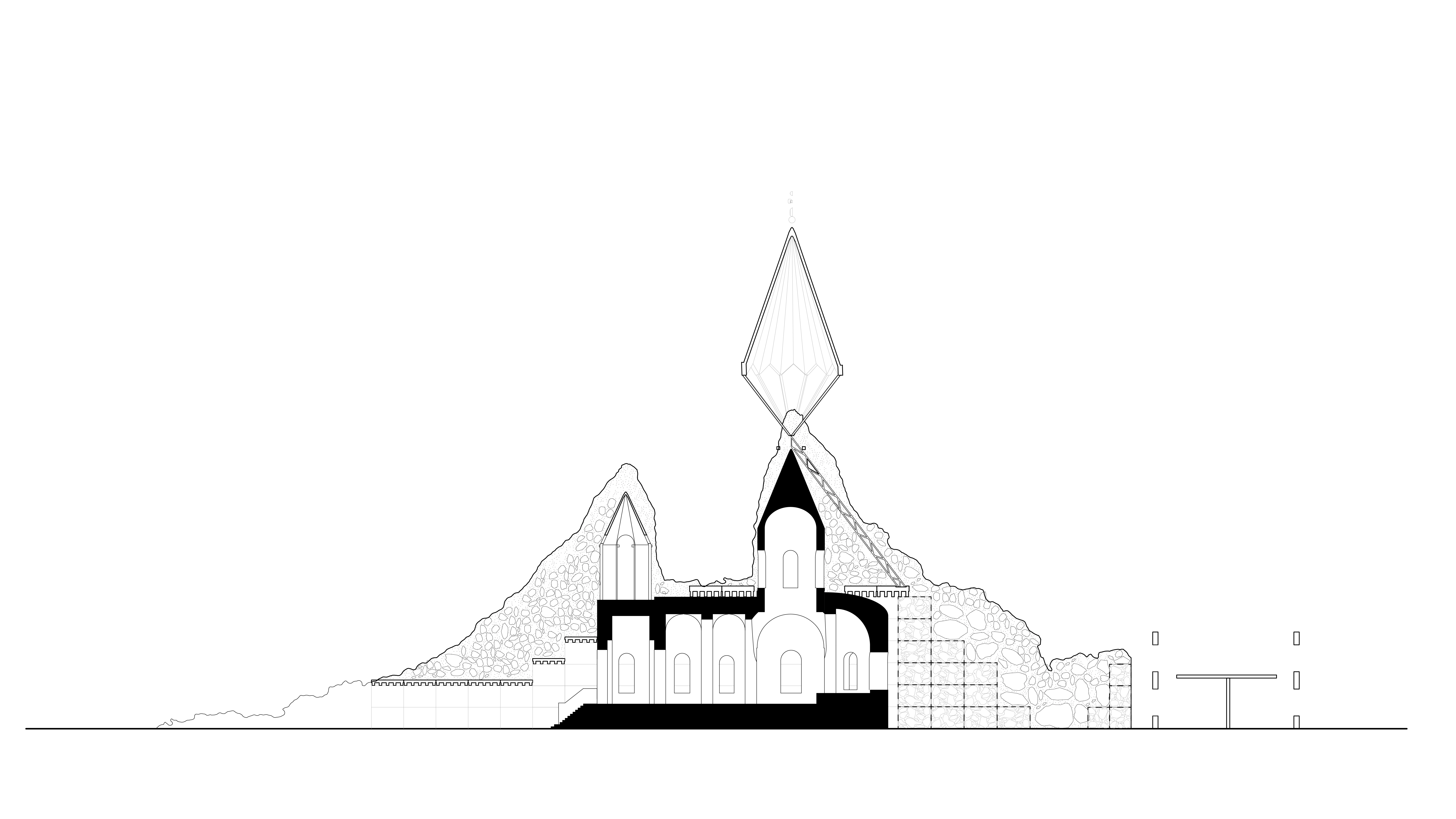
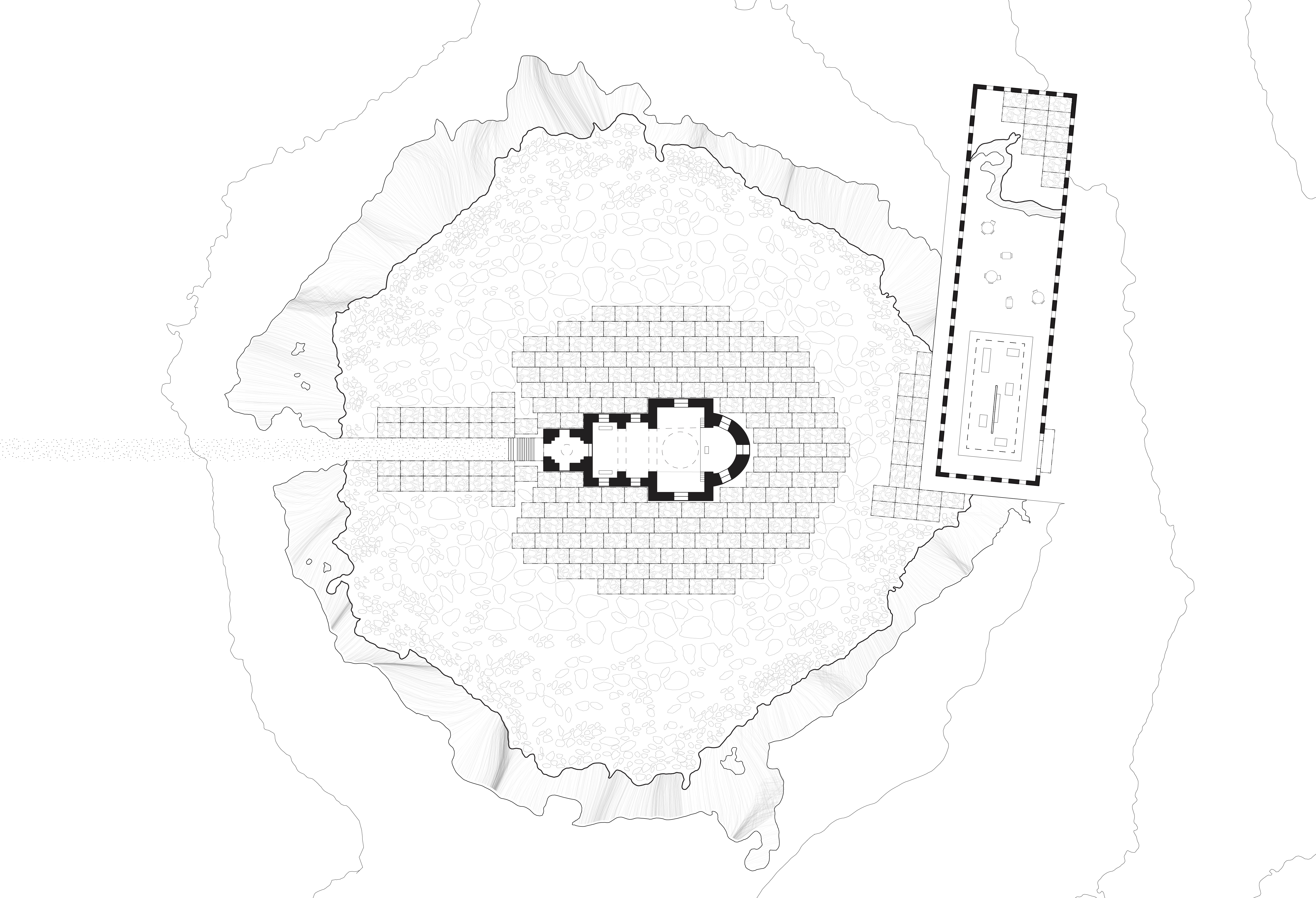
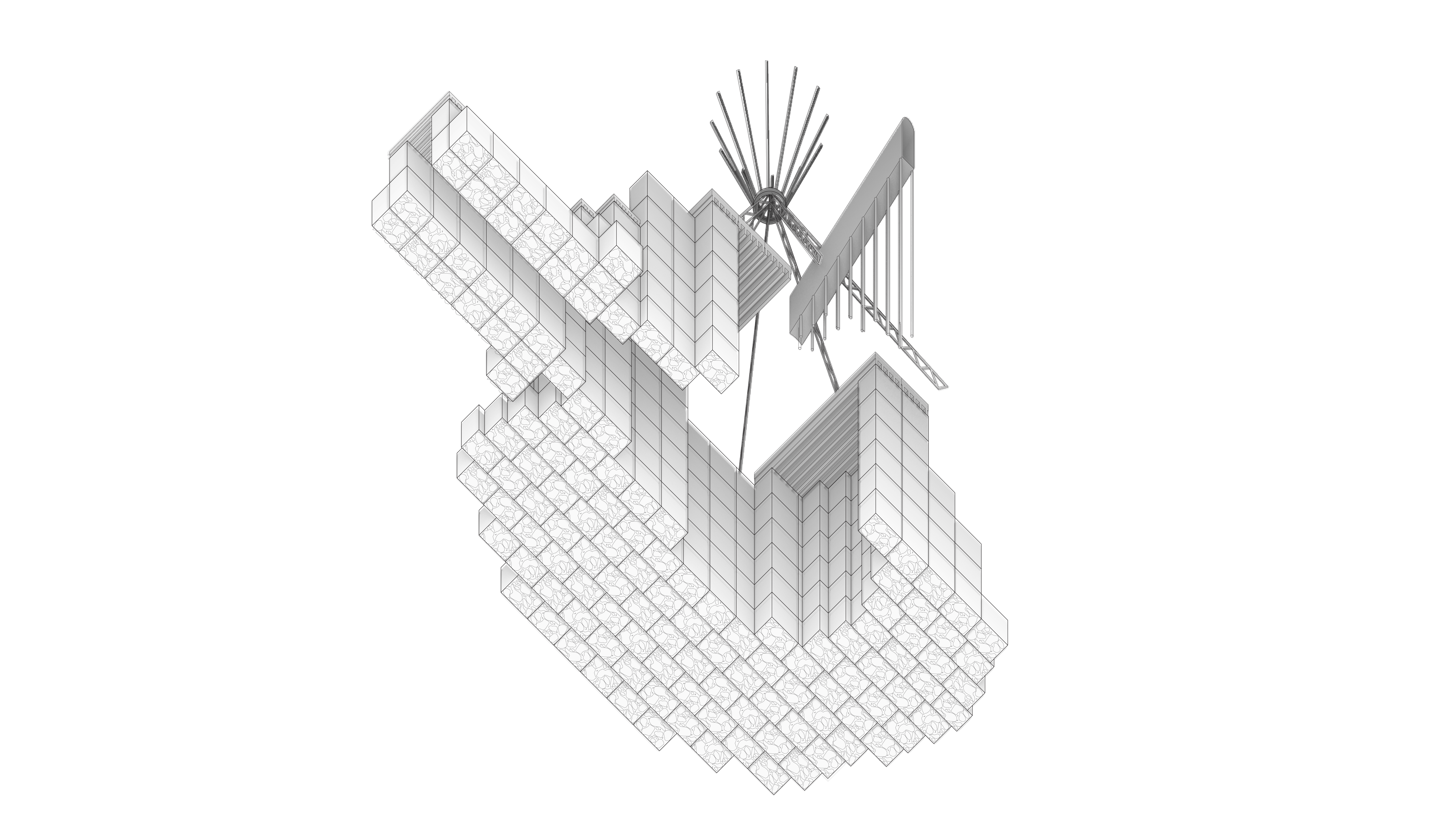
Building with Rubble
Drawing from historical precedents like Berlin’s Teufelsberg, the intervention uses gabions filled with rubble to encase the church in a process of architectural "mummification." A structural framework stabilizes the roof, allowing for potential future restoration while shielding the site from immediate destruction.


A Landscape of Disappearance
The intervention creates a landscape that both hides and preserves, responding to the broader pattern of cultural erasure in the region. Rather than monumentalizing loss, it allows the church to persist in a latent state—neither fully erased nor entirely visible. Two domes within the structure reference Armenian architecture, and the relocated roof of Ghazanchetsots Cathedral reinforces the interplay between hidden and visible heritage.

This project is both an act of preservation and strategic erasure, camouflaging Armenia identity while safeguarding its existence. It challenges the politics of heritage in post-war Nagorno-Karabakh, questioning how we preserve history in a landscape where it is constantly rewritten.

N.B.: This project was developed under the guidance of Sergio Lopez-Pineiro.
The Kanach Zham has been completely demolished, according to satellite research by Cornell’s Caucasus Heritage Watch.
This research was developed before the forced displacement from Artsakh.
Shant Charoian is an architect based in Yerevan, Armenia. A graduate of the Harvard Graduate School of Design with a post-professional Master of Architecture, he also holds a BA in Architecture from California State Polytechnic University, Pomona, where he earned the Outstanding Senior Project prize. In 2023, he established Jardar NGO to advance architectural thinking in Armenia, currently hosting The Oshakan Project, a summer school that reimagines heritage and sustainable construction in Armenia, and Line: Armenian Architecture Biennial, an event that will address community challenges and advocates for transformation through thoughtful work with Armenia’s public spaces.
Ippokratous 9, 10679
Athens, Greece